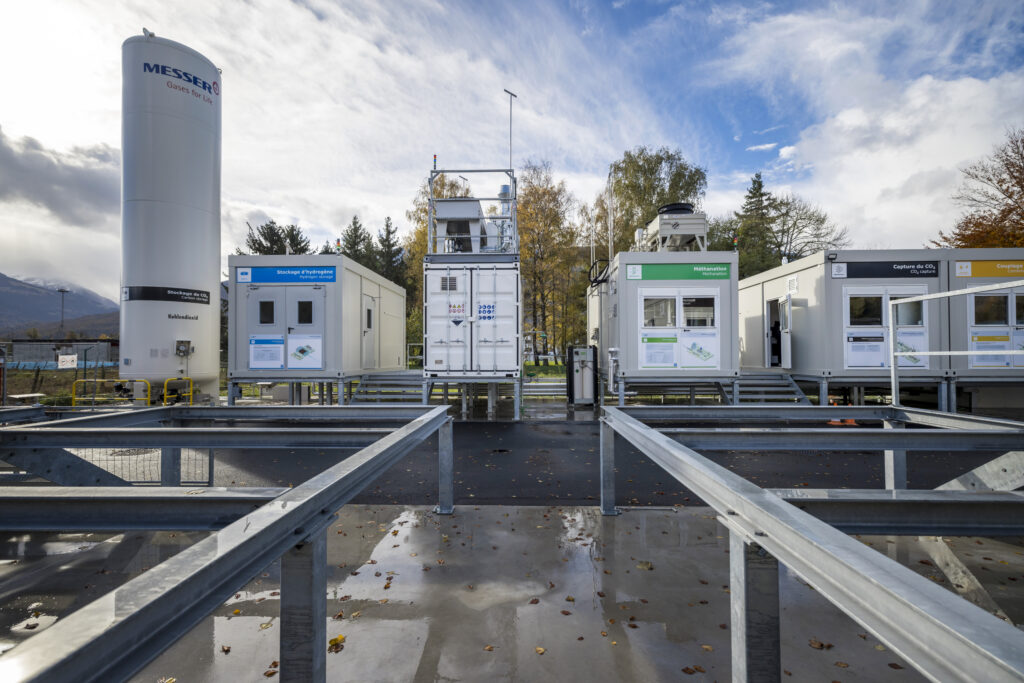Hydrogen production via electrolysis involves the decomposition of water (H₂O) into its constituent elements, hydrogen (H₂) and oxygen (O₂), using an electric current. This method is particularly significant in the context of sustainable energy, as it produces hydrogen without direct greenhouse emissions. The reduction of emissions requires the used electricity to be renewable.
Chemical process #
The process occurs in an electrolyzer, which typically consists of two electrodes (an anode and a cathode) placed in an electrolyte. Water molecules are split at these electrodes due to an applied electric current. At the cathode (negative electrode), a reduction reaction takes place. Hydrogen gas is produced:
2H2O + 2e− → H2 + 2OH−
At the anode (positive electrode), an oxidation reaction occurs, releasing oxygen gas:
4OH− → O2 + 2H2O + 4e−
The combination of the two reaction yields:
2H2O (l) → 2 H2 (g) + O2 (g)
Electrolyzer technology #
Several types of electrolyzers implement the process. This article provides a short comparison of the different methods. Efficiency, robustness, and scalability are critical challenges for hydrogen production via electrolysis. Current efficiency levels typically range between 60% and 80%. Innovations in electrode materials, membrane technology, and system integration are ongoing to reduce costs and improve efficiency. They may transform electrolysis into a cornerstone of the hydrogen economy. This image (IEA) provides an interesting insight into the improving maturity of the different technologies. Electrolysis is not the only hydrogen generation method, other methods exist too. This article provides a general overview.






